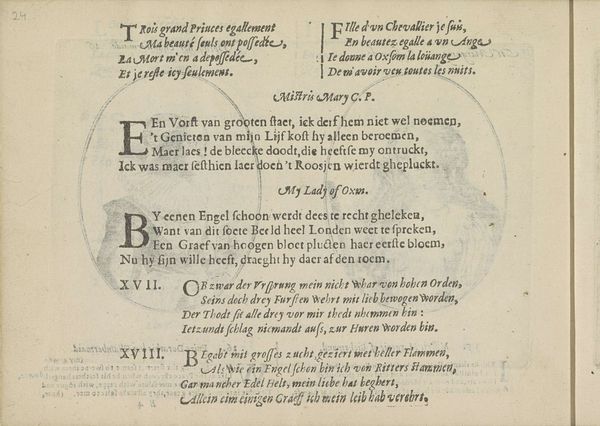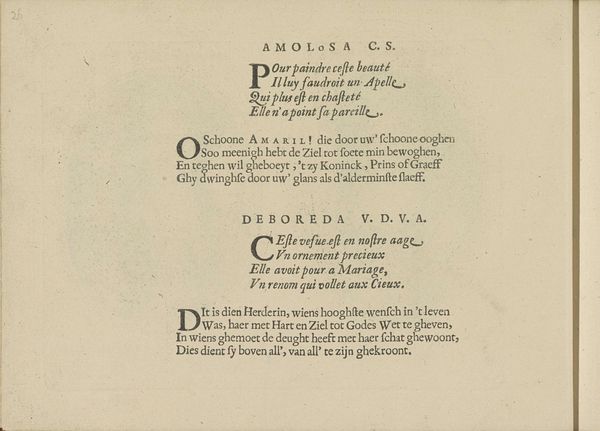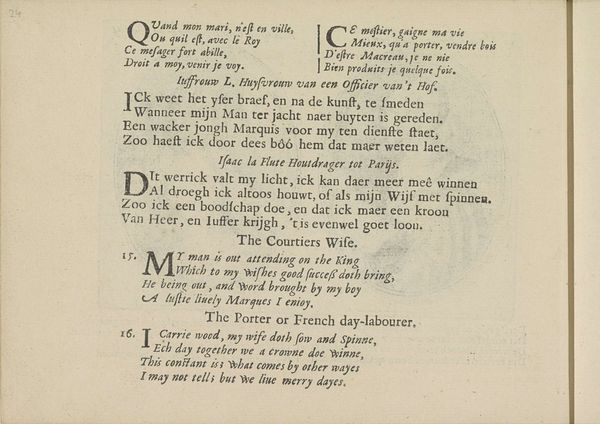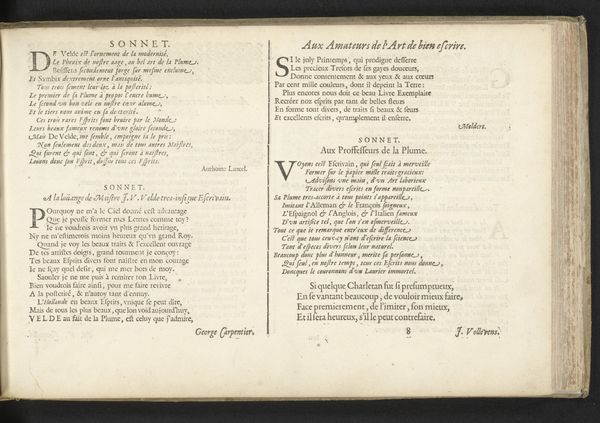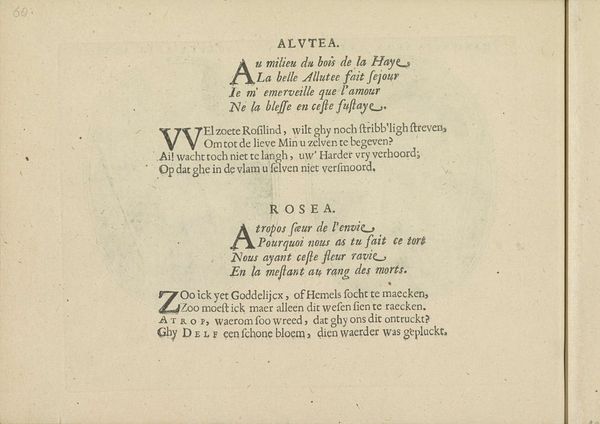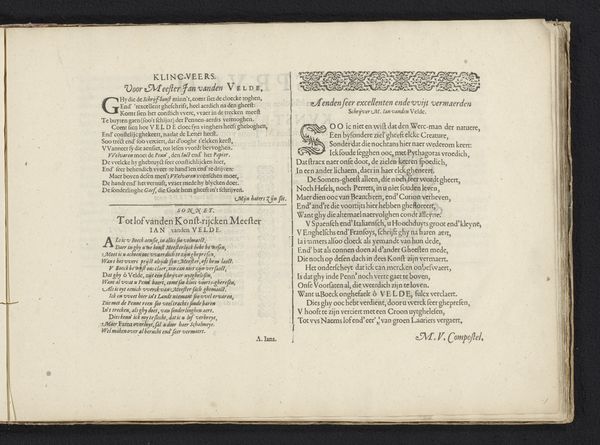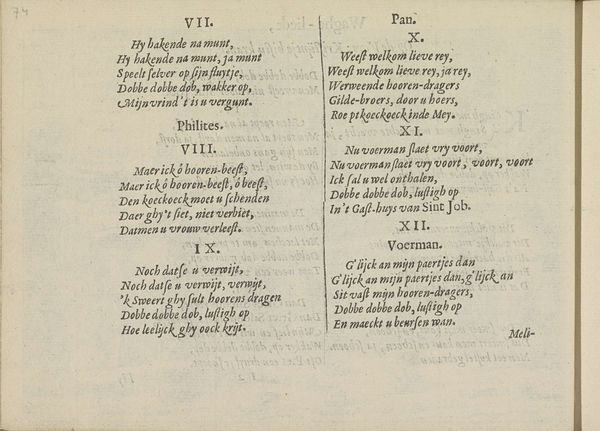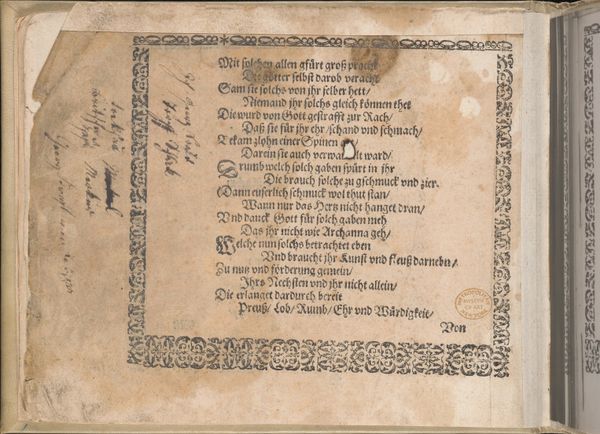
Kwatrijnen bij de portretten van de courtisanes genaamd Meesteres Magery van Richmond haar dienstmeid Dorothee 1635
0:00
0:00
crispijnvandeiipasse
Rijksmuseum
graphic-art, print, etching, engraving
#
portrait
#
graphic-art
#
baroque
# print
#
etching
#
text
#
genre-painting
#
engraving
#
calligraphy
Dimensions: height 141 mm, width 190 mm
Copyright: Rijks Museum: Open Domain
Curator: Today we’re looking at "Kwatrijnen bij de portretten van de courtisanes genaamd Meesteres Magery van Richmond haar dienstmeid Dorothee", an engraving and etching by Crispijn van de Passe the Younger, from 1635, found at the Rijksmuseum. It presents text alongside two portrait medallions. What are your first thoughts? Editor: Immediately, I'm struck by how text-heavy it is. It feels less like a portrait and more like… illustrated poetry? And it’s so orderly, the portraits almost seem secondary to the rigid blocks of verse. Curator: That's perceptive. Indeed, this graphic work functions as both visual art and social commentary. Passe places these women, titled courtesan and chambermaid respectively, within a literary context through these poems or "quatrains" printed beside their portraits. These verses offer glimpses into their lives and social standings. Editor: The verses give the image this really specific context, pinning down how they’re seen. Is it complimentary or critical? There's a line about one being formerly a "Burgers Wijf", a citizen's wife... that sounds pointed. Curator: Exactly. The prints were produced within a specific social and moral climate where perceptions of women, especially those who occupied ambiguous positions in society, were heavily policed. The Dutch Republic was in its Golden Age, enjoying prosperity, yet anxiety existed surrounding social mobility and perceived moral decay. Printmakers circulated images that could either celebrate or critique aspects of the changing world. Editor: It’s so interesting how print could broadcast these opinions, fix them, really. You know, I was trying to imagine their voices, if they’d recognize themselves in this neat little layout. Curator: It’s powerful to think about how prints mediated identities, defining the sitter through carefully worded texts and composed likenesses. The piece sits between art object and socio-political tool. Editor: Right, it’s less about what they looked like, and more about what the culture *thought* they looked like. I wonder what Margery and Dorothee would make of all this today.
Comments
No comments
Be the first to comment and join the conversation on the ultimate creative platform.


